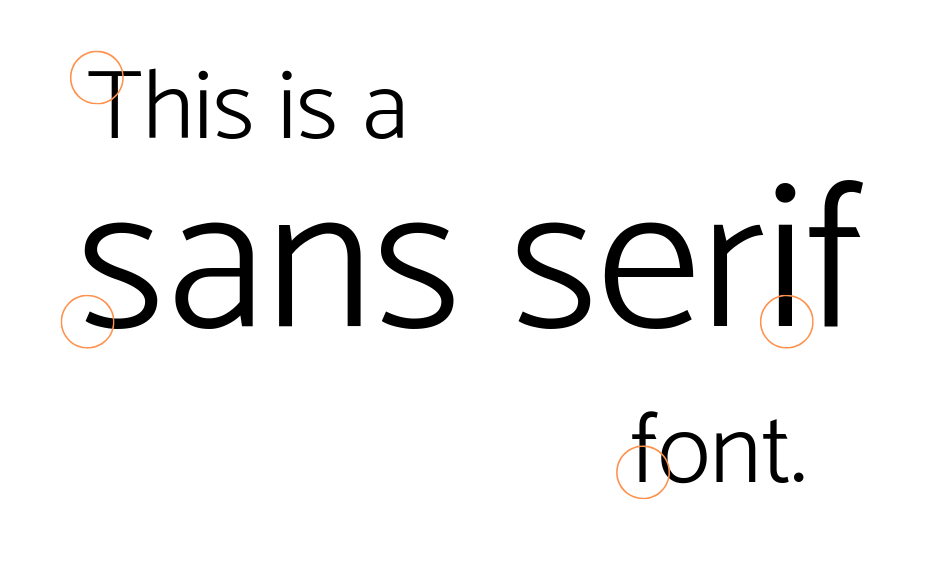

- #Difference between serif and sans serif font software#
- #Difference between serif and sans serif font professional#
In fact, the differences are “so peripheral to the reading process that this effect is not even worth measuring.” Any alleged differences in readability are slight.There is no consensus about which is more readable, serif or sans serif, and there are many studies finding no difference at all.He reviewed more than 50 empirical studies on typography and drew three useful conclusions: Which is more readable, a serif font or a sans serif font? For years I heard from lawyers and writing experts that “studies show” that serif fonts are more readable than sans serif fonts.īut when I went looking for the studies, I came across an exhaustive report by a consultant named Alex Poole. So my recommendation (not a rule) is to use a serif font for most legal documents.
#Difference between serif and sans serif font professional#
Attorney for his district required that all documents filed by federal attorneys be in Arial.)īut what if it’s up to you? Generally, serif typefaces are more common in legal writing than sans serif, and they tend to look more professional to most lawyers. (A Social Security Administration lawyer told me that the U.S. Yes, some courts and other organizations require a certain font, and you might work for someone who insists on a particular font. Most legal writers have, at some point, had to decide whether to use a serif or sans serif font. (Below right.) Examples are Arial, Tahoma, and Calibri.

(Below left.) Examples are Times New Roman, Garamond, and Cambria.

Serif fonts have small extensions at the end of each stroke, called serifs. This post defines a few terms, reports on some research, and offers some recommendations.įonts come in two broad categories: serif and sans serif. Although, the one you are looking at right now is Gotham.What are the best fonts for legal writing? Legal text appears most often in traditional, serious documents-statutes, contracts, pleadings, and briefs-so let’s narrow our definition of “best” to professional and readable. An example of a sans-serif font family you are probably familiar with is Helvetica.
#Difference between serif and sans serif font software#
The lack of the decorative flair can make them seem “cleaner.” They are often found on digital screens in blogs, websites, and software applications. Sans-serif typefaces are considered more modern by some. An example of a serif font family you are most likely familiar with is Times New Roman. You can find serif fonts in most newspapers, books, and magazines.

They are considered easier to read by some, as the serifs help separate the letters and words for our eyes. Serif typefaces are considered more traditional, as they have been around since the earliest examples of typography. “Sans” means “without,” so a sans-serif font is one that does not have the extending features called “serifs” at the end of strokes. You may have heard the terms serif and sans-serif before, but do you know what those terms actually mean? In typography, a serif is a small line, stroke, or other decorative flair regularly attached to the end of a larger stroke in a letter or symbol within a particular font or family of fonts.


 0 kommentar(er)
0 kommentar(er)
